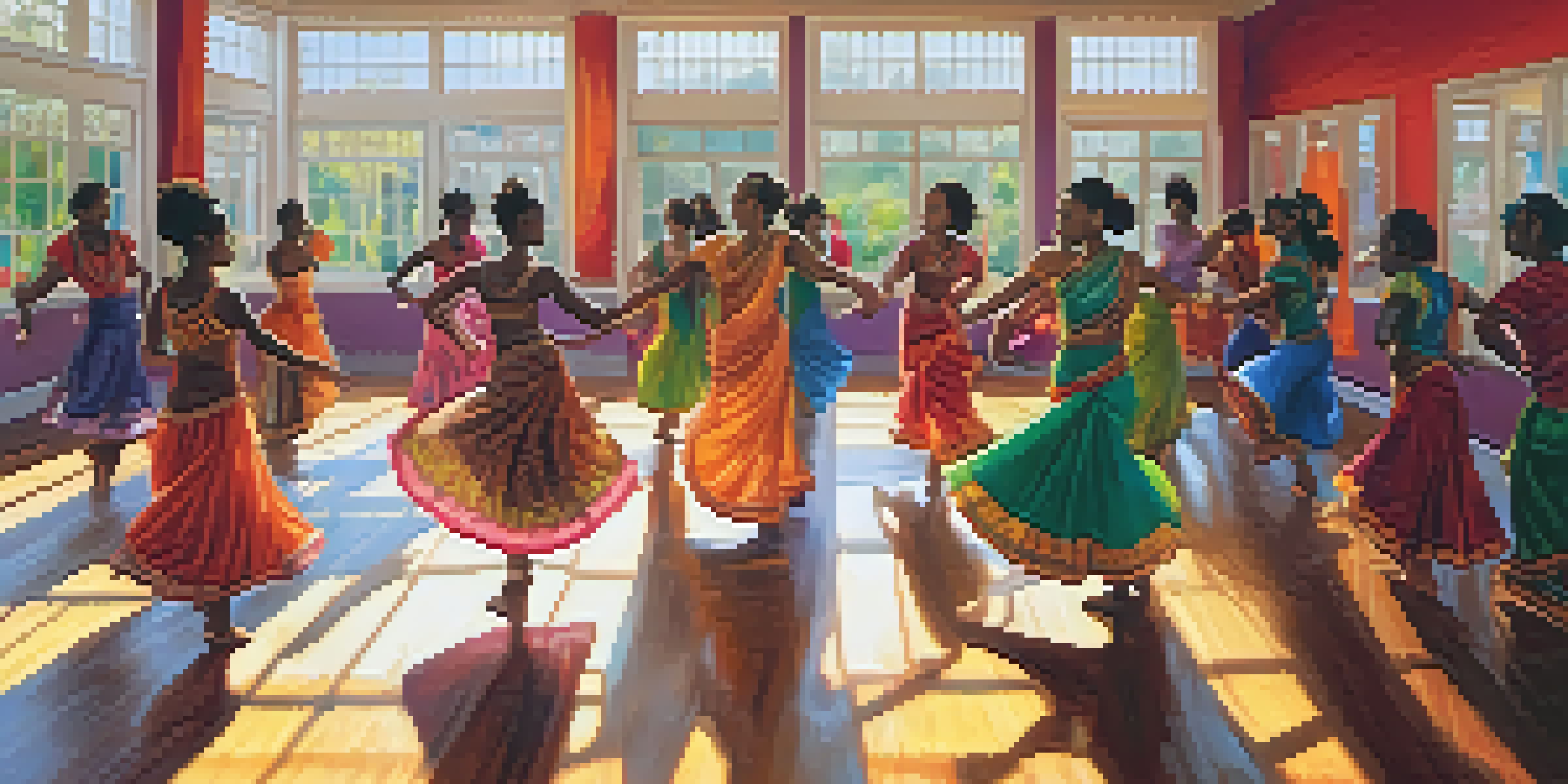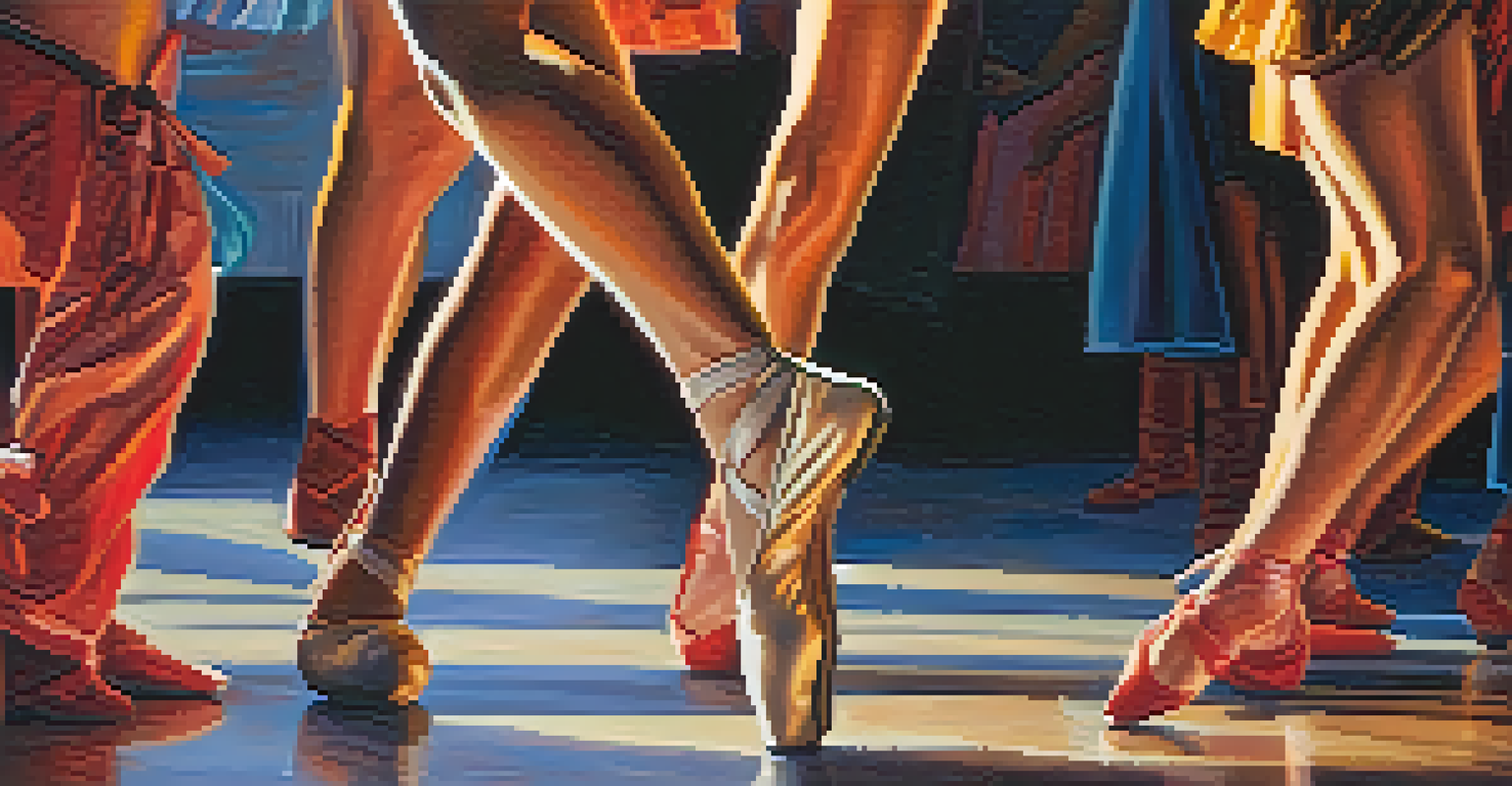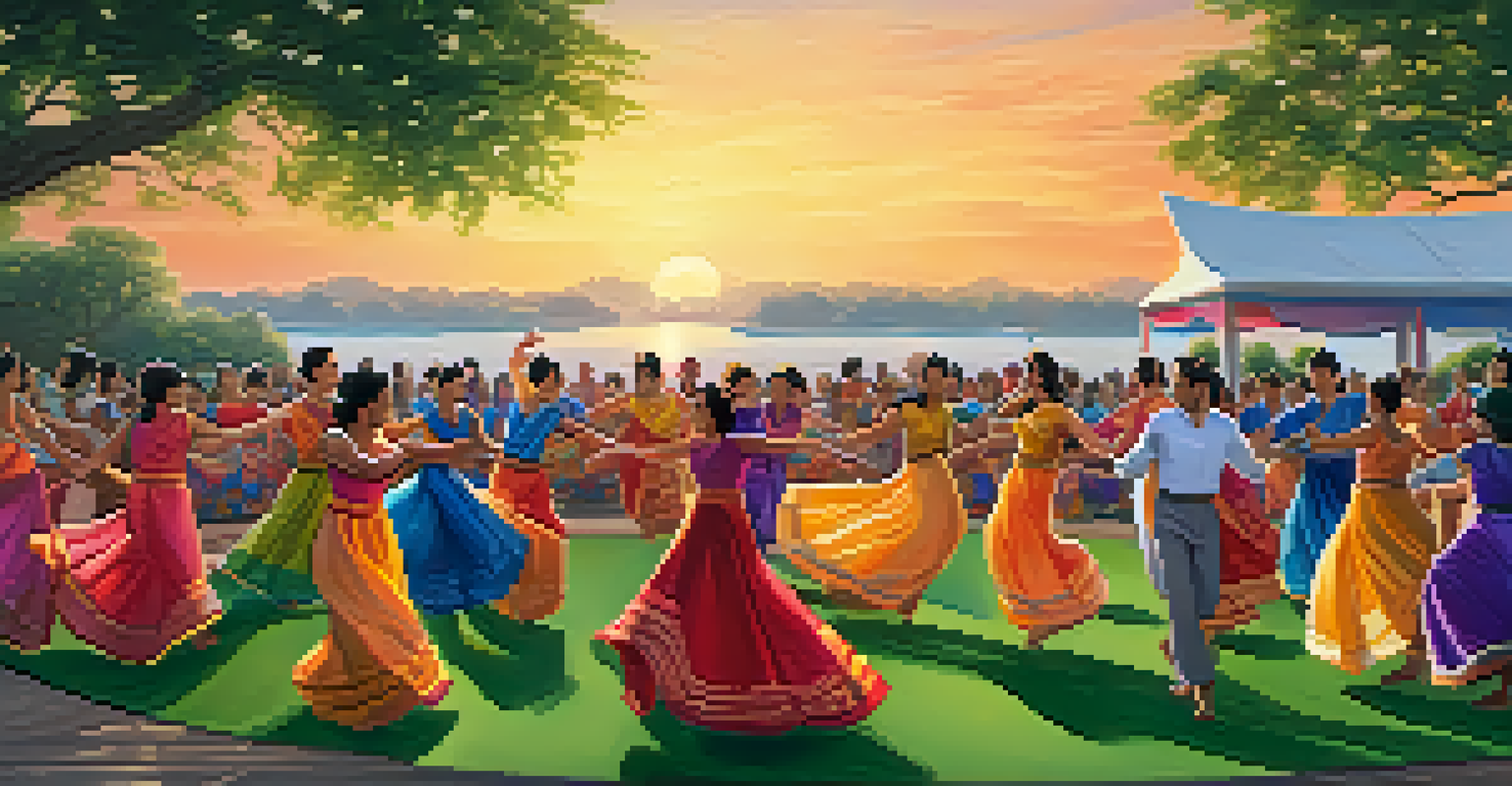Cultural Appropriation in Dance Representation on Screen

Understanding Cultural Appropriation in Dance
Cultural appropriation occurs when elements of one culture are taken by another, often without understanding or respect. In the realm of dance, this can manifest when choreographers or performers borrow styles, movements, or aesthetics from cultures that are not their own. This practice can lead to a misunderstanding of the original context and significance of the dance form, which is essential to its cultural identity.
Art is not a mirror held up to reality, but a hammer with which to shape it.
For instance, consider a film that features a hip-hop dance sequence performed by dancers who have no connection to the culture from which hip-hop originated. While the dance may be visually appealing, its representation can strip away the rich history and struggles of the communities it comes from, reducing it to mere entertainment. This highlights the importance of acknowledging the roots of the dances we see on screen.
Moreover, cultural appropriation can perpetuate stereotypes or reinforce power dynamics, as it often involves a dominant culture borrowing from a marginalized one. This raises questions about who gets to tell cultural stories and how those narratives are shaped, which is a critical discussion in the dance community and beyond.
The Impact of Dance Representation on Screen
Dance representation in films and television holds immense power, influencing how audiences perceive different cultures. When cultural dances are portrayed, they can either celebrate diversity or perpetuate harmful stereotypes. For example, a film that accurately represents traditional dance can foster appreciation and understanding, while one that trivializes it can lead to misunderstanding and disrespect.

Moreover, the way dance is choreographed and performed on screen can send messages about authenticity and ownership. Viewers might find themselves associating certain dance styles with specific cultural identities, which can lead to misinterpretation of the dance's significance. This is especially true when choreography is stripped of its cultural context and presented solely as a visually appealing spectacle.
Cultural Appropriation in Dance
Cultural appropriation occurs when dance styles are used without understanding their cultural significance, often leading to misrepresentation.
It's essential for filmmakers and choreographers to recognize their responsibility in how they represent dance. By choosing to engage with the cultures they portray and collaborating with cultural insiders, they can create more respectful and authentic representations that honor the original art forms.
Examples of Cultural Appropriation in Dance
A notable example of cultural appropriation in dance can be seen in some popular music videos where traditional dances are used as mere backdrops. For instance, a pop star performing a Bollywood-inspired dance in a music video might do so without understanding the cultural significance of the movements or the context in which they originated. This can dilute the essence of the dance and alienate those who hold it dear.
Cultural exchange is not cultural appropriation. It’s understanding and respecting the roots of a culture while also allowing it to evolve.
Similarly, films that feature 'exotic' dance numbers often do so without providing insight into their cultural backgrounds. This can lead to a narrative that exoticizes the culture instead of celebrating it, reducing it to a mere visual spectacle. Such portrayals can perpetuate a cycle of misunderstanding, where audiences remain unaware of the depth and history behind the dances they see.
These examples emphasize the need for mindfulness and sensitivity in dance representation. By highlighting the stories behind the dances and involving cultural representatives in the creative process, artists can help foster a more respectful and authentic appreciation of diverse dance forms.
The Role of Choreographers in Cultural Sensitivity
Choreographers play a crucial role in how dance is represented on screen. Their choices can either honor or undermine the cultural significance of the styles they incorporate. A responsible choreographer will take the time to educate themselves about the cultural origins of the dance forms they wish to use, seeking guidance from cultural custodians whenever possible.
For instance, a choreographer working on a project that includes African dance should collaborate with African dancers or cultural experts to ensure authenticity. This collaboration not only enriches the choreography but also provides a platform for marginalized voices, allowing them to share their stories and perspectives. It's a win-win situation that enhances the artistic integrity of the work.
Choreographers' Responsibility
Choreographers must educate themselves on the origins of the dance forms they use and collaborate with cultural insiders to ensure authenticity.
Moreover, choreographers should aim to create an inclusive environment where dancers from diverse backgrounds can feel valued and represented. This approach not only leads to more authentic performances but also fosters a sense of community and respect among artists, bridging cultural divides through the universal language of dance.
Audience's Role in Recognizing Cultural Appropriation
As audiences, we have a powerful role in shaping the discourse around cultural representation in dance. By being aware of the cultural contexts of the dances we watch, we can better appreciate their significance and hold creators accountable for their representations. This means critically engaging with dance performances and questioning whether they are respectful and authentic or appropriative.
For example, when viewers encounter a dance performance that feels out of place or lacks context, it’s crucial to pause and reflect on why that might be the case. Asking questions like, 'What is the origin of this dance?' and 'Who is telling this story?' can lead to deeper understanding and appreciation of the art form. This mindset encourages a more informed and respectful viewing experience.
By voicing our opinions and supporting work that honors cultural traditions, we contribute to a shift toward greater sensitivity in the arts. Our engagement not only impacts future productions but also fosters a broader conversation about cultural appreciation versus appropriation in society.
Promoting Cultural Respect in Dance Education
Dance education plays a vital role in fostering respect for diverse cultures. By integrating lessons on cultural history and significance into dance curricula, educators can help students develop a deeper understanding of the art forms they study. This foundation encourages future dancers to approach diverse styles with respect and awareness.
For instance, a dance class that explores traditional African dance should not only focus on the movements but also discuss their cultural context, significance, and history. This comprehensive approach allows students to appreciate the richness of the dance form beyond its aesthetic appeal. It also prepares them to engage respectfully with the dance forms they encounter in their careers.
Audience Engagement Matters
Audiences play a crucial role in recognizing cultural appropriation by critically engaging with dance performances and holding creators accountable.
Furthermore, promoting cultural exchange within dance education can cultivate mutual respect among students from diverse backgrounds. Workshops led by cultural representatives can provide students with firsthand experiences and insights, fostering a sense of community and understanding that transcends cultural boundaries.
The Future of Dance Representation in a Diverse World
As our world becomes increasingly interconnected, the future of dance representation relies heavily on collaboration and respect. Dancers, choreographers, and filmmakers must prioritize authentic storytelling that honors the cultures they represent. This shift not only enriches the art form but also creates space for diverse voices to be heard and celebrated.
Moreover, audiences are becoming more discerning and vocal about the representations they see on screen. This growing awareness pushes artists and creators to be more mindful of their choices, fostering a culture of accountability and respect within the industry. By advocating for authentic portrayals and supporting projects that prioritize cultural sensitivity, we can drive positive change.

In summary, the journey towards respectful dance representation is ongoing and requires collective effort. By educating ourselves, engaging with diverse communities, and promoting inclusive practices, we can ensure that dance continues to be a powerful medium for cultural expression and understanding in our ever-evolving world.